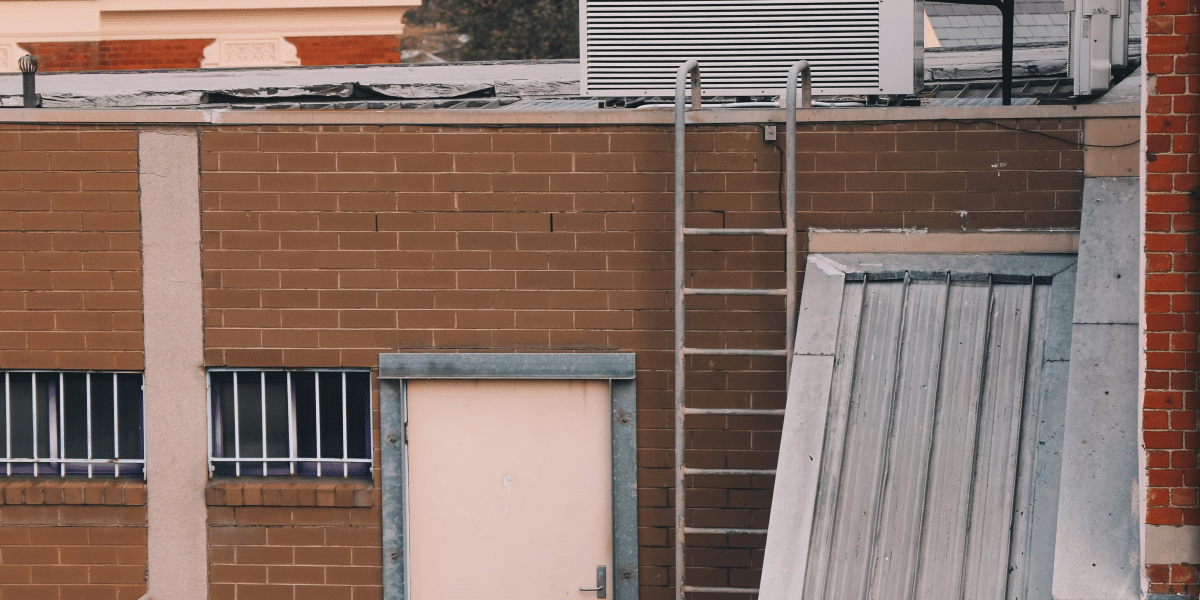Safe and efficient roof access is fundamental to maintaining building safety and functionality. Roofs protect a building from environmental elements, hence require regular maintenance and upkeep to prevent damage and accidents. Timely repair and maintenance minimizes risks, improves the structure’s life, and reduces the likelihood of costly problems. Neglecting this critical aspect of building care can lead to structural weaknesses and compromise overall safety.
Ensuring Structural Integrity
Roofs bear extreme weather conditions, including rain, temperature changes, and wind. With prolonged exposure, these elements damage the roofing materials. Loose shingles, cracks, and clogged gutters are common examples. With routine checks these can be identified and addressed before becoming a major problem.
Easy roof access is even more critical in buildings where HVAC and drainage systems are installed on the roof because they need regular maintenance to work efficiently. Neglecting these inspections not only leads to costly damage but also creates safety risks for occupants.
Safety Protocols and Accessibility
A safe work environment is paramount for professionals conducting maintenance or inspections on rooftops. For this purpose, the professionals strictly adhere to the set safety protocols. For example, they should use Personal Protective Equipment (PPE), fall protection systems, and secure ladders or access points. Proper roof access minimizes unnecessary risks when staff conducts their inspection and maintenance work.
Accessibility plays a very essential role in the event of emergencies. Firefighters and other emergency responders, for instance, may need immediate roof access to address situations like fires or structural collapse. Buildings with well-designed access systems enhance both safety and efficiency for these critical services. Routine check-ups also become more efficient when access points are adequately maintained.
Compliance with Regulations
Compliance with building codes and regulations is an essential aspect of ensuring secure roof access. Many local governments or regulatory authorities require certain safety features, such as guardrails, ladders, and a roof hatch.
Strict adherence to these standards not only protects the maintenance personnel but also saves building owners from lawsuits. Non-compliance can result in serious fines, liability issues, and more risks during building inspections or emergencies. A compliant system ensures proactive commitment to safety and maintenance.
Advancements in Roof Access Solutions
Modern innovations in roof access solutions have made it easier and safer to maintain buildings. Technologies such as modular access platforms, retractable ladders, and fall arrest systems are designed to minimize risks while improving efficiency. These advancements provide reliable options for both routine and emergency tasks, supporting a professional plumbing crew or other maintenance professionals in their work.
Innovative solutions are especially beneficial for high-rise buildings, where accessing the roof presents unique challenges. With these technologies, maintenance becomes more efficient, reducing downtime and ensuring long-term functionality.
Frequently Asked Questions
How does a routine roof inspection play a role in building safety?
Roof inspection preserves structural integrity in a building. Roofs are exposed to tremendous stormy rains, howling winds, and extreme temperatures, which puts on extra wear and tear with time. Problems such as loose shingles, cracks in the roofs and clogged gutters become overt if inspecting is not conducted regularly. This would result in costly repairs and destroying building structures. Scheduled maintenance prevents major problems, enhances the roof’s lifespan, and minimizes safety risks to occupants.
How does accessible access to the roof help maintenance and emergency services?
Accessible access to the roof is not only an important necessity for routine maintenance but also in times of emergencies. Regular inspections on HVAC systems, drainage, and the roofing materials themselves require clear and safe access points. In case of fires or damage to the structure, quick and safe access is necessary to the roof for effective response by firefighters and emergency personnel. Properly designed access points ensure that these tasks can be performed safely and efficiently, minimizing risks for both workers and responders.
What safety procedures apply during roof inspections and maintenance?
Roof safety is a priority during roof inspections and maintenance. Workers performing the task should have a clear understanding of the safety procedure to be followed, such as donning personal protective equipment (PPE), fall protection system arrangements, stabilization, and serviceability of all ladders and access points for safety purposes. Ensuring actions and building codes are met with the stipulated local regulations ensures safety for the maintenance personnel and the people in the building.
Summary
Roof access is significant in ensuring the safety and longevity of any building. Regular checks, adherence to well-known safety standards, and modern solutions in roof access help building owners save costly damage and ensure that people inside are safe. Proper roof access solutions and routine checks are vital investments in the safety, efficiency, and structural integrity of any property.
Published by: Annie P.


















